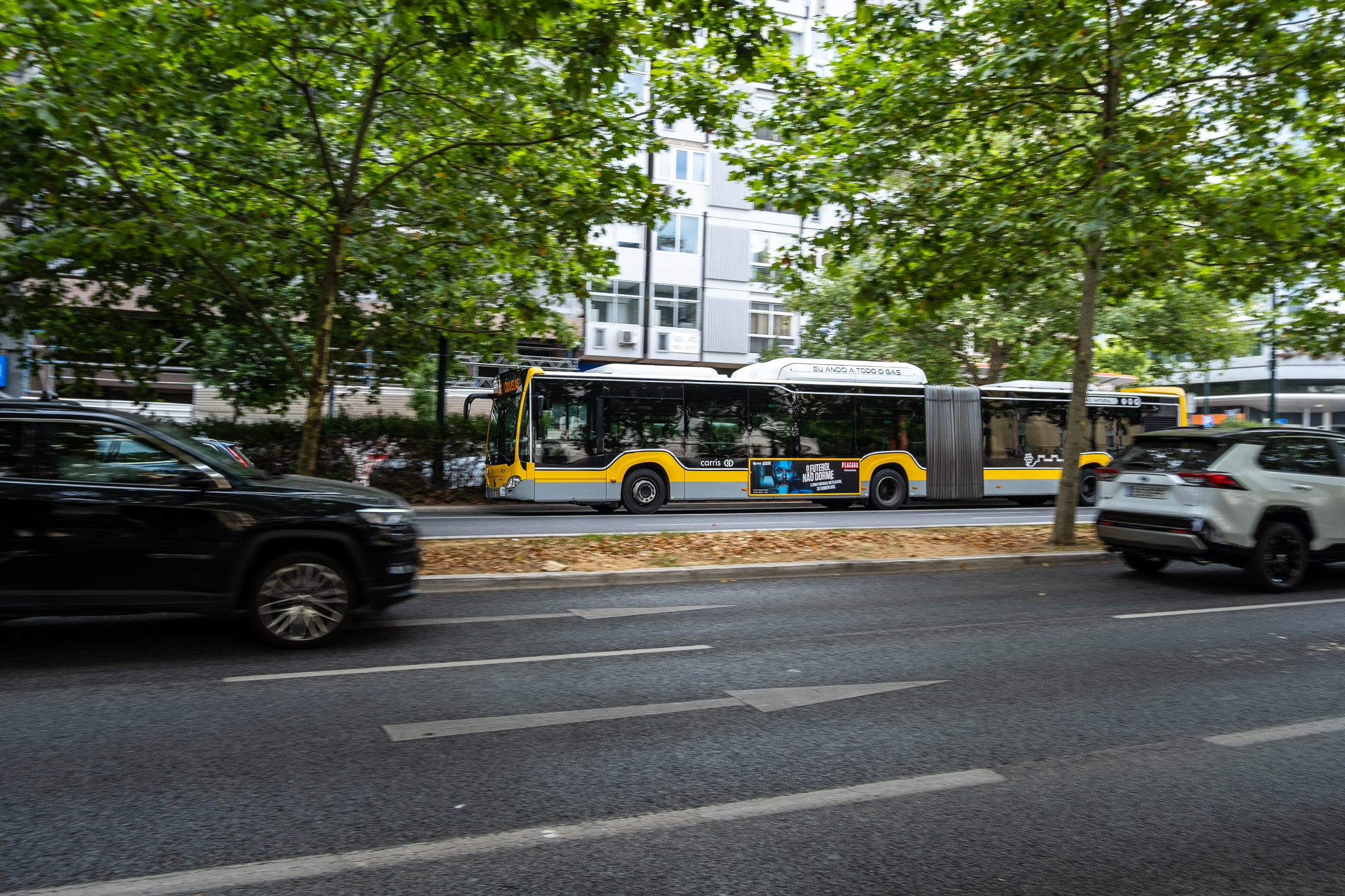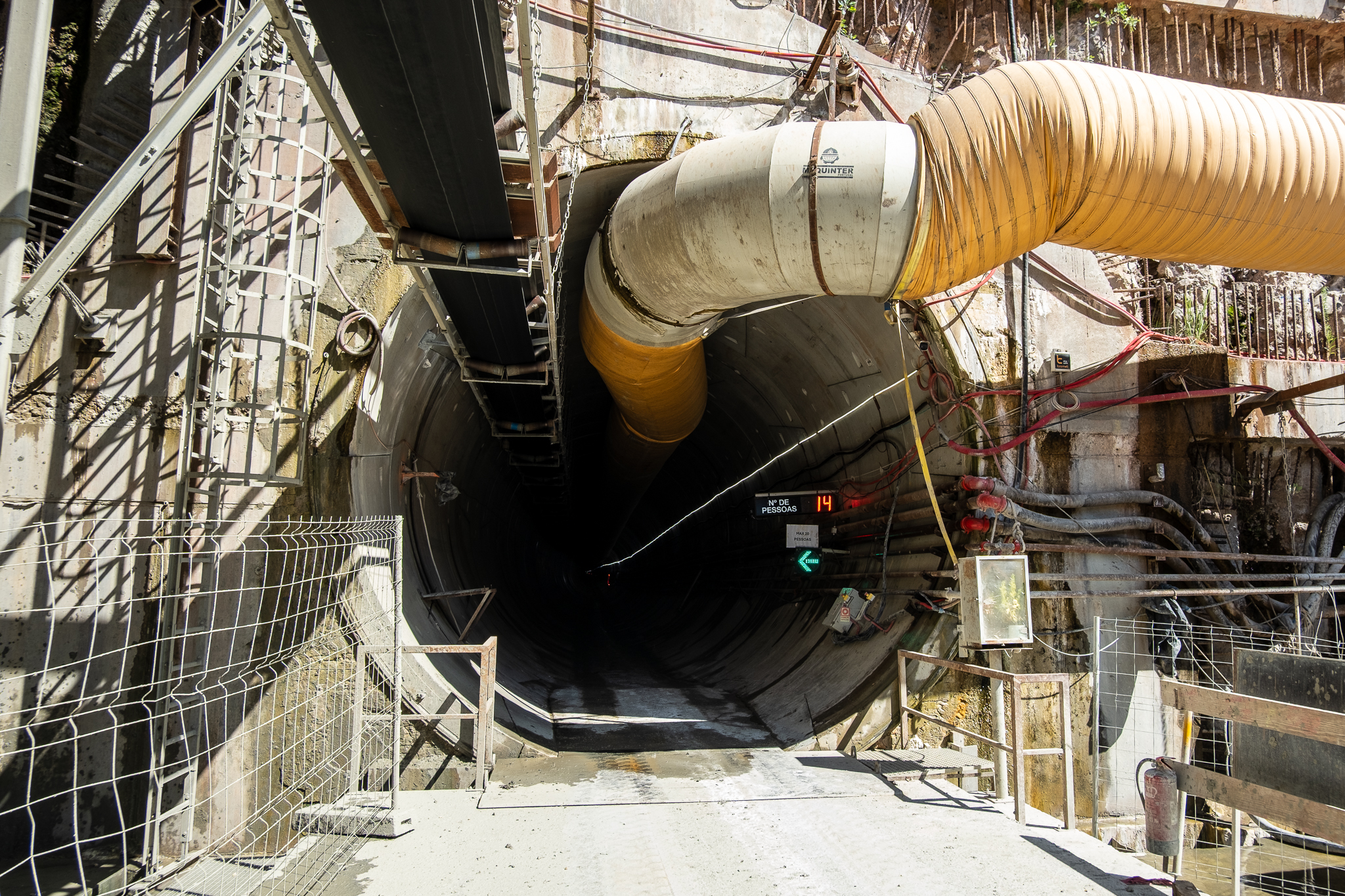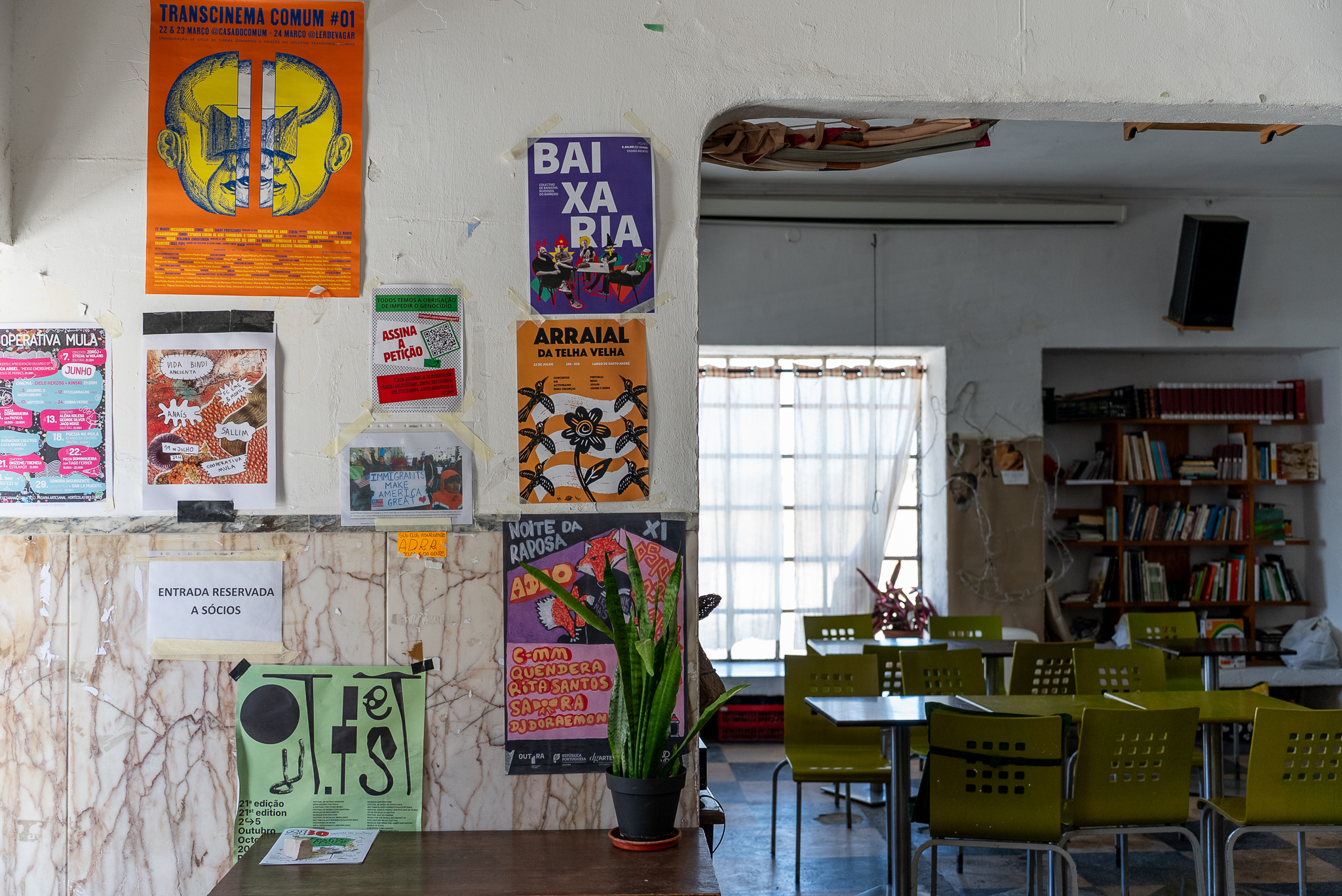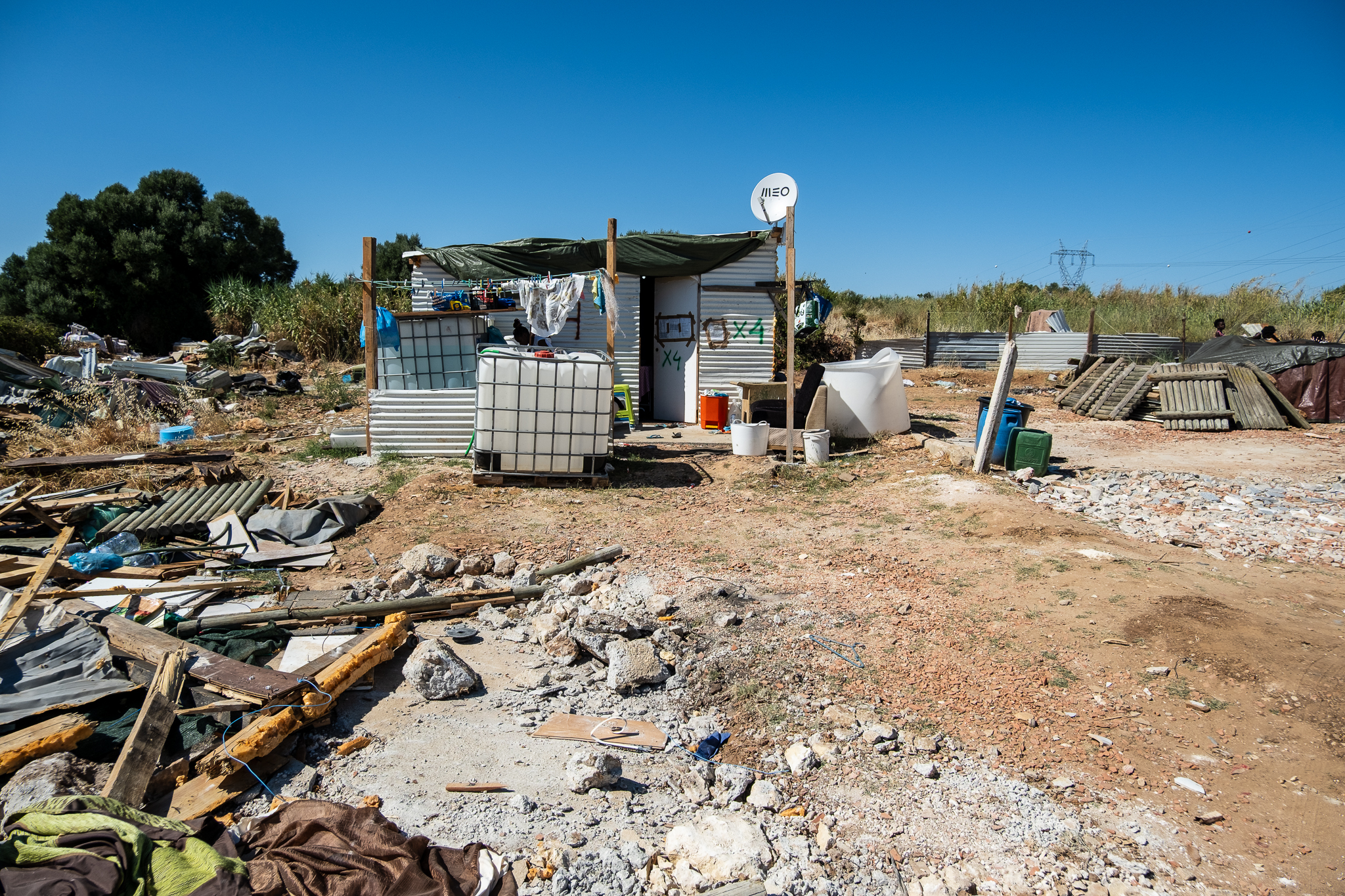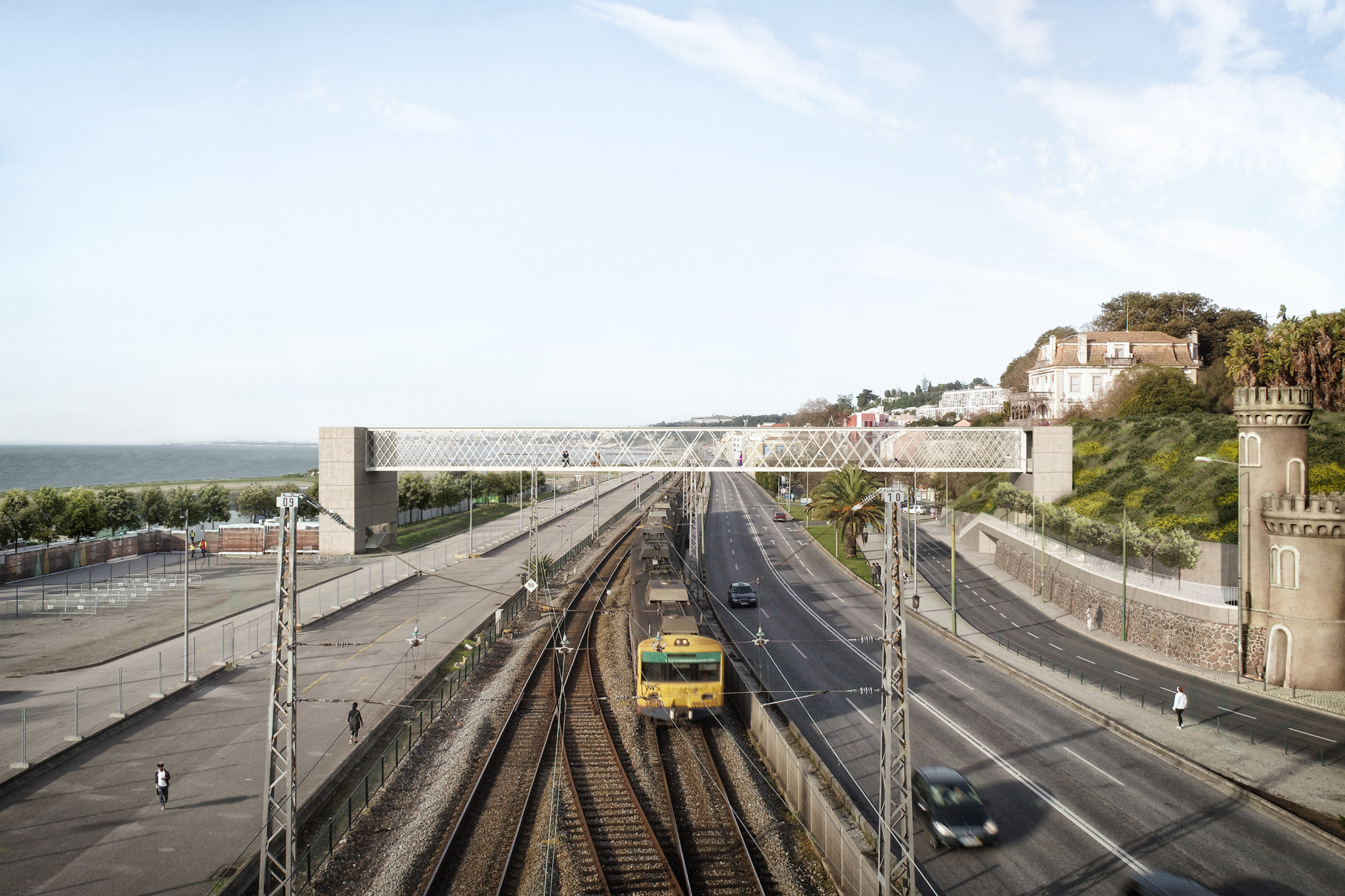Diogo Martins couldn't get off the train at Entrecampos and access the Metro. The installation of a ramp and three elevators at the metro station unlocked new mobility options for him.

If Diogo came from the Sintra Line and wanted to get off at Entrecampos to catch the Metro to Saldanha, he couldn't do it. I was able to get off the train platform and get to the Metro platform via the elevator in the train station, and then walk through the underground passage that connects to the Metro station until I was very close to the gates. But then I was surprised by five steps that I could not get over - and it was not even worth the effort: just ahead, after swiping the pass card, access to the boarding platforms was only possible by stairs.
For Diogo Martins, the Entrecampos Metro station didn't exist until this week on the network map, just like many others that still don't exist. But the installation of three elevators and a ramp opened a new station to Diogo, who can now access the atrium and then each of the piers. Of the 56 Lisbon Metro stations, there are now 34 stations where "full accessibility" is guaranteedIn other words, where there are elevators or elevating platforms so that all people, regardless of their physical condition, can access the subway service. That ratio of 34 to 56 means that 61% of the Metro is accessible; But if we look beyond the numbers, we see that it is in the center of the city, where businesses and services are concentrated, that there are more stations that are inaccessible to people with reduced mobility.

Diogo is an activist and coordinator of Lisbon branch of the Center for Independent Livingan organization that defends the autonomy of "people with functional diversity". For him, the installation of the three elevators and the ramp in Entrecampos Metro will unlock new possibilities in his mobility in the city. Now, if you come from the Sintra Line and want to get to Saldanha, you can get off to the Metro in Entrecampos. Before, the only railway station in the so-called Waistline with an accessible subway connection was the Oriente. Since going there would be a long way around, the most logical route would be to get off at Entrecampos and do the rest via Avenida da República (which has wide, accessible sidewalks since the 2017 intervention). "Since I'm in a power chair I don't get as tired but there are other people in manual chairs for whom it's more difficult", points out. Taking a bus was a solution to escape the physical effort involved in moving a manual chair for about 1 km.
Saldanha was the first and only accessible Metro station in the entire axis between Campo Grande and Picoas, which is not only one of the main business hubs in the city but also a plateau area, relatively flat, and therefore better for people with reduced mobility. "You have to make things accessible by default. It's not we who have to adapt to the infrastructure, it's they who have to be adapted."Diogo, who constantly has to deal with obstacles, laments.

According to Metro de Lisboa, the installation of the three elevators and the ramp at Entrecampos station cost 1.08 million Euros and is part of a larger project that also involves Cidade Universitária station. The work had been awarded to the consortium of the Domingos da Silva Teixeira, SA/Efacec Group in June 2021, for a total investment of 2.56 million euros. For the month of May, it is expected the conclusion of the construction work at Cidade Universitária station. "University City is a more complex work because of the structure of the station"Diogo, who has been following the work at both stations, points out.

In Entrecampos, the elevator from the Metro's atrium to the surface was placed next to the former grounds of Feira Popular and complements the two elevators that already existed in the train station. This redundancy is important. "If there is a problem in the station elevators, which is not uncommon, the Metro's is safeguarded by them. They're the ones who manage it." Metro de Lisboa is in charge of the subway and the train station is the responsibility of Infraestruturas de Portugal (IP). Although trains and subway are connected, each space is managed differently and, therefore, maintenance is done by different teams.
In total, there are now three elevators between the subway concourse and the surface - one outside, on the Metro, and the two in the train station. On the subway, there are two more elevators to allow access to the boarding piers; on the railway side, the two elevators serve all the floors and also the boarding platforms. Diogo regrets that there are only two elevators "in one of the busiest train stations in the country" - data from 2018, point to about one million passengers per month. "It doesn't make sense to have two elevators only, small ones on top of that." In shopping centers and large department stores, we often see large, spacious elevators, which can accommodate dozens of people and also bulky purchases. Diogo says that he often has to wait because, although he has priority, there are often several passengers with priority as well.

"Elevators are the safest way" for wheelchair-dependent people to move around at transport interfaces, compared to other mechanisms such as stair lift platforms. This is the facility offered to passengers at the Baixa-Chiado Metro station, for example. "it takes a long, long time and doesn't make for heavier chairs"Diogo points out, mentioning that, without elevators, this station has a "chronic problem" which because of its depth will be difficult to solve. But it is not enough to have elevators in a station - "they have to exist in sufficient numbers, with sufficient space and in operation". Malfunctions are recurrent and, in the absence of a site that presents this information, the notices are posted only in the places. In other words, Diogo may even be able to access the Entrecampos Metro and pass the gates, but then find out that the elevator that gave access to the direction he wanted to go is under maintenance.
Even with full accessibility, Diogo can't be fully autonomous on his Metro journey. Between the Metro train and the pier there is a step that he can't overcome alone. If he can eventually ask a passenger for help, the normal procedure is to ask an employee or security guard for help - in every station there is a ramp that is placed at the door of the train so that Diogo can get on. All of this means that a trip that would normally be an immediate one can take longer. Diogo can't run to the Metro that has just arrived at the station and often has to wait for the next train. A small ramp in every station that would give access to at least one of the train doors could be a simple solution and a relatively low investment to make. The new Metro trains will already be aligned with the level of the platforms, without a step, according to Diogo.

Still, a trip on the Lisbon Metro is much better than on CP, where to travel on a suburban train (such as the Sintra Line) you have to book - by phone or through CP's website - at least 12 hours in advance. And the appointment has to be for a specific train and for a predetermined time. If the train is delayed, Diogo has to wait for the delayed train - even if he arrived at the station earlier and could still catch the earlier one. If it is cancelled, CP contacts him so that he can choose between the previous train and the one after the cancelled one. But, in any case, if Diogo wants to travel by train in Lisbon - even if it is to go from Benfica to Oriente because it is a connection that is better done by train than by Metro - he has to have that trip planned 12 hours in advance. On long-distance or regional trains, you must book at least 24 hours in advance.
The advance notice is only so that the train conductor knows that there is a passenger with reduced mobility and can help him/her board, using the mechanical aid that exists in all trains of the Sintra Line (the carriages that run on the Azambuja Line and the Fertagus trains are accessible, without steps, with the help of a simple removable ramp). A simple button at the stations that Diogo could press or a mobile application with the same function could avoid this process of pre-booking trips, allowing the conductor to be notified in real time that there is one or more special needs passengers needing to board.

There is still a long way to go when it comes to making public transportation accessible to all people, regardless of their motor skills. And in a Lisbon that is about to invest 14.9 million euros in free transport for young students and over-65s living in the city, one might ask whether it wouldn't be a priority to invest in public transport that everyone can use. All in all, the installation of elevators in Entrecampos and Cidade Universitária subway stations is only costing one fifth of the budget foreseen for free transport - and these are stations that, due to their location, will have a huge flow of young students, for example.

